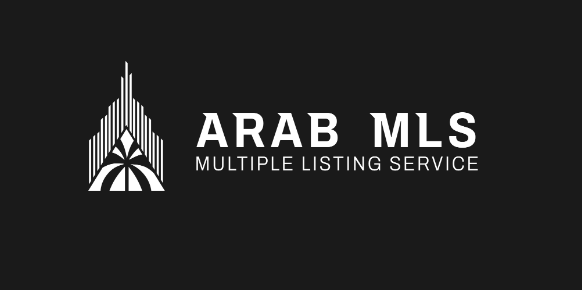Industrial and manufacturing spaces, such as warehouses, factories, and distribution centers, play a fundamental role in the global economy. These properties are essential for the production, storage, and distribution of goods, and their efficient use is critical to the success of businesses in various industries. However, due to their unique nature, industrial spaces require specialized listings and marketing techniques to attract the right buyers or tenants. This is where the Multiple Listing Service (MLS) comes in, offering a comprehensive platform for showcasing and searching for industrial and manufacturing properties.

In this article, we’ll delve into how MLS systems cater to the industrial and manufacturing sectors, explore the specific needs of these properties, and offer insights on how to effectively use MLS listings to enhance property visibility, streamline transactions, and ultimately secure successful deals.
The Importance of Industrial and Manufacturing Spaces
Industrial properties are defined as real estate used for industrial activities such as manufacturing, distribution, and storage. Unlike traditional office or retail spaces, industrial properties are built to serve the operational needs of businesses in manufacturing and logistics. These needs vary widely depending on the type of business, which is why industrial spaces come with specific requirements that must be met.
For instance, a manufacturing company may require large open spaces with high ceilings to accommodate heavy machinery and equipment, while a distribution company might prioritize locations with ample loading docks and proximity to major transportation routes. Industrial properties are typically located in industrial zones that are designated for such operations, and zoning regulations can significantly impact how a property is used and developed.
Additionally, industrial properties often have specialized infrastructure, including reinforced flooring for heavy equipment, high-capacity electrical systems, and even custom plumbing and HVAC systems. These features are not commonly found in commercial office spaces, so MLS listings must provide detailed descriptions of these systems to attract the right audience.
Why Use MLS for Industrial Properties?
The MLS is a powerful tool that connects property owners, real estate agents, and potential buyers or tenants in a centralized marketplace. By listing an industrial property on MLS, property owners gain access to a large pool of qualified buyers and tenants, which increases the chances of selling or leasing the property quickly and at the right price.
While MLS is traditionally associated with residential real estate, it can also be a highly effective platform for commercial real estate, including industrial spaces. One of the key benefits of listing industrial properties on MLS is the visibility it provides. MLS systems are widely used by real estate agents and brokers, meaning that industrial property listings will be seen by a large number of professionals who are actively looking for suitable spaces for their clients. This exposure is especially important in markets with high competition, where sellers need to ensure their properties stand out.
Moreover, MLS platforms typically offer advanced search filters that allow potential buyers and tenants to refine their search based on specific criteria. This helps buyers easily identify properties that meet their needs in terms of location, size, features, and price range. For industrial properties, the ability to filter based on characteristics such as ceiling height, square footage, and proximity to transportation routes can be especially valuable.
Key Features to Highlight in Industrial Property Listings
Industrial properties have unique features that should be highlighted in MLS listings to attract the right buyers or tenants. These features go beyond the basics of square footage and price and can provide crucial information about the functionality of the space. Some of the most important features to include in industrial property listings are:
1. Size and Layout
The size of an industrial property is one of the most important factors for potential buyers or tenants. These properties often require significant square footage to accommodate machinery, inventory, and production lines. It’s essential to list both the total square footage and the usable square footage, as buyers will want to know how much of the space is usable for their needs.
In addition to the overall size, providing a layout or floor plan can be beneficial. Many industrial buyers are looking for properties that can be adapted to their specific operational needs, and a floor plan can help them visualize how the space could be used.
2. Ceiling Height
The ceiling height of an industrial property is a critical factor for businesses that require tall ceilings for large machinery or to allow for vertical storage. Manufacturing operations, in particular, often require spaces with high ceilings to accommodate heavy-duty equipment. For warehouses and distribution centers, taller ceilings enable efficient stacking and storage of goods. Indicating the ceiling height in MLS listings helps buyers determine if the property meets their needs.
3. Zoning and Compliance
Industrial properties are subject to zoning regulations that define the types of activities that can take place on the property. Buyers or tenants must ensure that the property is properly zoned for their intended use, whether it’s for heavy manufacturing, light industrial, or distribution purposes. MLS listings should clearly state the zoning designation for the property, as well as any specific regulatory compliance requirements that may apply, such as environmental regulations, safety codes, or accessibility requirements.
4. Loading Docks and Truck Access
Many industrial properties require loading docks to facilitate the movement of goods in and out of the facility. These docks are essential for businesses involved in logistics and distribution. Including information about the number of loading docks, their size, and the property’s access points for trucks and freight vehicles is crucial for attracting the right buyers or tenants. Businesses that rely on shipping and receiving need to ensure that the property has adequate facilities for handling large deliveries.
5. Transportation Access
Industrial properties are often located near major transportation routes to facilitate the easy movement of goods. This may include proximity to highways, railroads, airports, or ports. Buyers looking for industrial properties are likely to prioritize locations that offer easy access to these transportation networks. Including details about the property’s accessibility to these routes can be a major selling point.
6. Infrastructure and Special Features
Industrial properties may require specific infrastructure to support operations, such as heavy-duty electrical systems, specialized plumbing, or custom HVAC systems. Additionally, properties may have unique features such as high-capacity elevators, refrigeration units, or secure fencing for storage. These specialized features are important for attracting businesses that need them and should be prominently featured in MLS listings.
The Benefits of MLS for Industrial Property Transactions
Using MLS to list industrial properties provides several benefits for both property owners and potential buyers or tenants. Below are some of the primary advantages:
1. Increased Exposure
Listing an industrial property on MLS ensures that it is visible to a wide audience, including real estate agents, brokers, investors, and businesses actively searching for industrial spaces. This increased exposure can lead to more inquiries and ultimately a faster sale or lease.
2. Better Market Insights
MLS platforms provide access to valuable market data, including comparable property listings and historical sales or leasing trends. This data can help sellers set competitive prices and provide buyers with valuable insights into current market conditions. For instance, by reviewing comparable properties, a seller can determine whether their asking price is in line with market rates, while buyers can assess whether a property is priced fairly based on its size, location, and features.
3. Streamlined Transaction Process
MLS systems often provide tools that simplify the transaction process, such as standardized contract templates, offer sheets, and lease agreements. These tools can save time for both sellers and buyers, making the negotiation and paperwork process more efficient. Additionally, MLS systems often provide contact information for brokers, making it easier to coordinate property showings and finalize deals.
4. Customization and Flexibility
MLS platforms allow sellers to customize their listings with specific filters and criteria, making it easier for potential buyers or tenants to find properties that meet their needs. Whether they are searching for properties with specific features or in a particular location, the ability to refine search parameters ensures that buyers are only shown properties that are most relevant to their requirements.
5. Security and Legal Protection
MLS platforms provide a secure environment for listing and managing industrial properties, offering legal protection for both sellers and buyers. By using MLS, sellers can ensure that their property information is accurate and legally compliant, while buyers can rely on the platform to provide detailed and up-to-date information.
Best Practices for Listing Industrial Properties on MLS
To maximize the effectiveness of MLS listings, it’s important to follow best practices when creating a listing for an industrial property. These best practices include:
- Provide Detailed and Accurate Information: The more information you provide in the listing, the better. Include details on square footage, ceiling height, zoning, and any special features or infrastructure that make the property stand out. This helps potential buyers or tenants quickly determine whether the property meets their needs.
- Use High-Quality Photos: Including clear, high-resolution photos is essential for showcasing the property. Capture images that highlight key features like loading docks, interior spaces, and unique infrastructure. A well-presented listing with quality photos is more likely to attract interest.
- Update Listings Regularly: Keep the MLS listing up to date with any changes to the property or its availability. If there are any modifications or improvements to the property, such as a newly installed HVAC system or an updated roof, make sure this information is reflected in the listing.
- Leverage MLS Features: Use advanced MLS search filters to target specific buyers or tenants. If your property is near major highways or has unique infrastructure, make sure these features are highlighted in the listing. Use MLS’s search tools to ensure your listing stands out to the right audience.
Conclusion
Industrial and manufacturing spaces have unique needs and require specialized marketing techniques to attract the right buyers or tenants. MLS systems provide an invaluable platform for listing these properties, offering increased exposure, access to market data, and a streamlined transaction process. By highlighting the key features of industrial properties, including size, ceiling height, zoning, and access to transportation routes, sellers can effectively showcase their spaces and connect with potential buyers or tenants.
Whether you’re listing a warehouse for lease, selling a manufacturing facility, or marketing a distribution center, MLS systems provide a powerful tool for reaching a wide audience and facilitating successful transactions. With the right information, high-quality photos, and up-to-date listings, MLS can be an effective way to navigate the industrial real estate market and secure the right deal.













